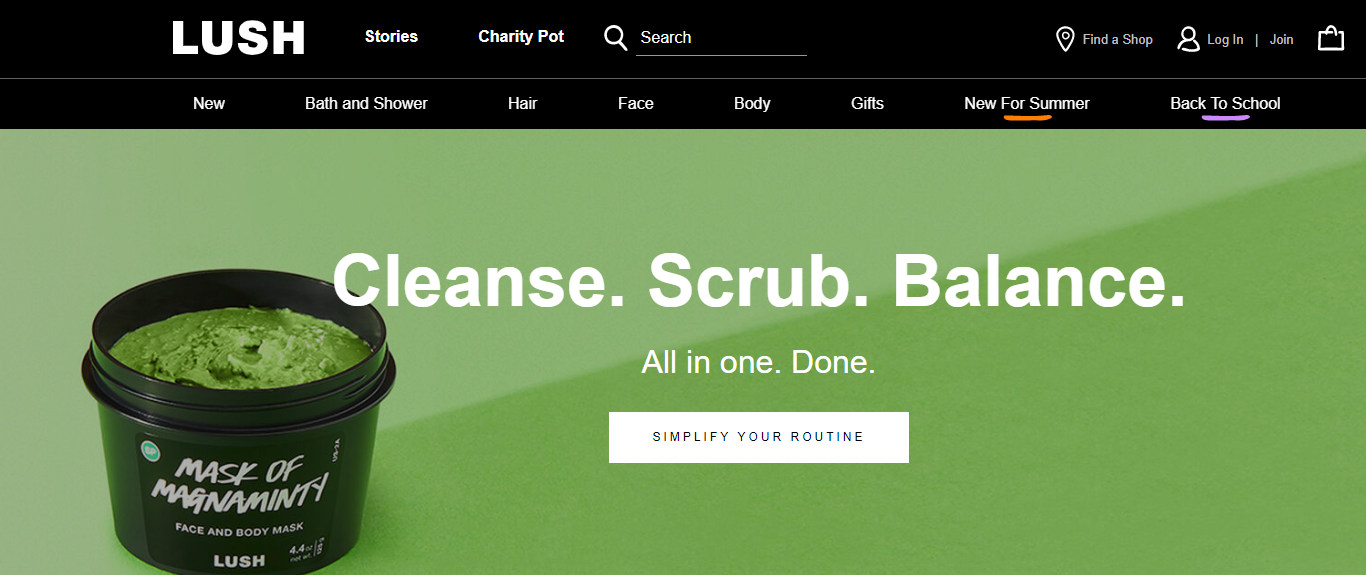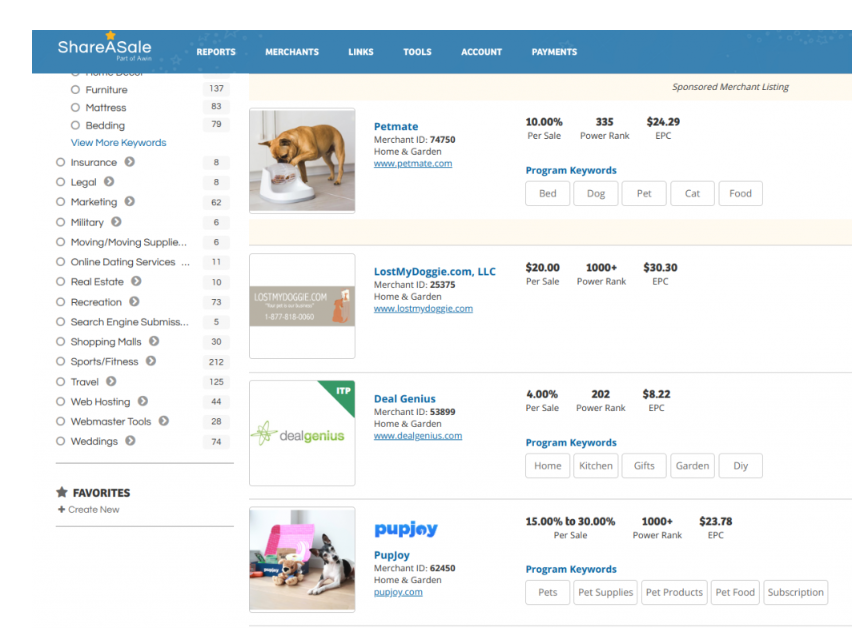Successful niche businesses solve customer problems and fulfill unmet needs. How to find a niche market involves performing keyword, competitive, and market research to find money-making business opportunities. You also need to explore where your interests and skills align with opportunities you find. You do all this to ensure you find a profitable niche market.

Three stages of niche market drill-down
1. List Your Skills, Interests, Hobbies & Passions
A good starting point for finding a niche market is listing all of the things, topics, and interests that you know well and enjoy. There are two very good reasons for using your own interests as your niche market launchpad.
The first reason to start with things you know and enjoy is that successful niche marketing takes time and energy. You’re going to spend a lot of effort setting up a website, developing content, and sourcing products or services that resonate with your niche audience, all before you ever make a dime. This labor is best done as a labor of love—or at least some level of like. If not, you’ll soon lose interest and end up with lackluster results.
The second reason that you want to focus on your interests as a business owner is that niche audiences know if you’re authentic. You can’t fool anyone; niche audiences know their stuff, so it’s hard to fake it among a crowd of enthusiasts. If you don’t have existing knowledge or the drive to learn all you can about the niche, it probably won’t pay off. Authenticity is key to successful niche marketing.
”Most niche marketing websites use content to establish credibility, rank well in the search engines, and connect with visitors. Developing content, whether for the purposes of affiliate marketing or direct product sales, must be done in a way that delivers value to a niche audience. A deep understanding of, and interest in, your niche helps your message resonate with visitors and sets your brand above pitchy, shallow competitors.”
– Sarah Beeksow Blay, Vice President of the affiliate marketing network, ShareASale
To recap, the first step to finding your niche is to make a list of your interests, areas of expertise, and skill sets. Don’t be afraid if your topics seem to have limited appeal. If it interests you, in all likelihood there will be a like-minded audience out there that you can reach. Make that list and then explore how you can best serve your niche by solving problems that aren’t currently being solved.
2. Find Problems Your Niche Faces & Solve Them
When exploring how to find a niche market, you need to identify gaps in the marketplace. In other words, you need to know where needs exist and solutions do not.
The most successful products and services on the market today have one thing in common: they all solve problems. As a niche marketer, the better you become at solving problems for your niche, the more successful you’ll be.
With your list of interests, skills, hobbies, and passions in hand, think about what products and services you wish existed that don’t. Consider the problems that your niche market faces. There is gold in those problems if you’ll just use your imagination to come up with ways to provide a desirable solution.
Here are a few examples of niche marketing successes that solved problems and are making great money in the process:
- Spanx: Founder Sara Blakely couldn’t find a pretty, high-quality smoothing undergarment for women anywhere, so she invented one. Today, Blakely is a billionaire because she solved a problem that no one else was solving in her niche.
- Lush: This cosmetics company sets itself apart by only selling products made from fresh, organic products that are never tested on animals. Lush offers products that were once nearly impossible for cosmetics users to find, and they’re now profiting from solving that problem.
- Kaioptics: This U.S.-based online eyewear seller solves a problem that many Asian-American people face: poor-fitting eyeglasses. Kaioptics sells only Asian-Fit eyewear. They sell their glasses online and most frames are priced under $100. Access to affordable, well-fitting eyewear that can be bought online is proving to be exactly what the Asian-American eyewear-buying niche wants.
The better you become at solving problems and addressing pressing needs for your niche, the more likely you’ll be successful. Take time to consider what your niche wants and needs and how you can carve out a special place in your niche by providing unique solutions to those wants and needs.

Lush cosmetics carved out a niche in the cosmetics world by offering handmade organic products.
3. Assess Niche Viability: Keyword Research & Trends Analysis
To find your niche, you want to make sure it is large enough to be viable, but not so large it’s impossible to target. There are a number of avenues you can explore to determine whether a niche is viable.
The first way to assess market viability for different niches is to conduct keyword research. Free keyword research tools like Semrush make it easy to find niche services people are looking for online.
The second way is to explore market trends. Both techniques help you determine how popular various niche topics are and, more importantly, if there are shoppers searching for related goods. If you uncover search engine traffic and trends in social media surrounding a niche topic, then you can comfortably say there’s an audience for that niche.
Conduct Keyword Research to Find Your Niche
There are several keyword research tools on the market. Some of the best keyword research tools available are free, like Keywords Everywhere and Semrush. Keyword research can also be done on platforms like Ahrefs and Moz at an affordable cost.
Conduct Keyword Research Using Google’s Keyword Planner
This research tool is included in Google Ads, and you can create a Google Ads account and access this tool free without actually running any ads. You can use the Keyword Planner to view the number of searches people make using various search terms, commonly known in marketing as keywords.
Knowing the top keyword terms used for your niche is a business imperative. Smart keyword marketing is the secret to ranking high on Google, which is key to making money as a niche business owner.
When using the Google Keyword Planner to find your niche, enter a keyword that applies to your niche. Note that keywords are usually a phrase of two or more words rather than a single word. Google will then show you the average monthly search volume ranges over time. You’ll also see search volume for related terms, which is helpful in spotting popular products and topics within the niche. Google even measures the competitive outlook for niche terms in the “Competition” column.
How to Use Keywords Everywhere for Keyword Research
The free Keywords Everywhere (KE) browser app is a shortcut that provides Google’s top-level keyword data without having to do a deep dive into the Keyword Planner tool. KE is not as thorough as AdWords, but it’s great for quickly researching overall search volume for a long list of terms. Simply install KE on your browser and every time you conduct a search, KE will display results for related keywords on the right side of your screen.
Find Your Niche Using Paid Keyword Research Tools
In addition to free keyword research tools, there are a number of paid tools on the market that offer more robust research functions. Paid plans with platforms like SE Ranking, Semrush, or Ahrefs offer comprehensive tools not only for keyword research but also for overall search engine optimization (SEO). Popular functions include advanced keyword research, domain authority scores, keyword rankings tracking, backlink tracking, historical data, and competitor research.
Since the financial commitment for these tools can be steep, be sure to experiment with each before making a purchase. Most of these paid research tools offer a feature-limited free version or free trial.
Research Online Trends to Find Your Niche Market
When exploring how to find your niche market, you’ll also want to take a look at niche trends. You need to assess how much chatter is going on about your niche, and more specifically, what people are talking about and how online conversations are changing over time. Google Trends is a perfect free tool for understanding niche market trends. There are also several other paid and free tools for spotting trends, including Hootsuite, BuzzSumo, Social Mention, and Feedly.
How to Use Google Trends for Niche Research
Google Trends is a free tool that lets you check the trending popularity of niche market topics and products. With a quick keyword search, you can see if the audience is consistent, trending up or down, or seasonal.
Unlike Google’s Keyword Planner and Keywords Everywhere, Google Trends doesn’t deliver actual search numbers. Instead, it maps keyword search popularity trends in easy-to-read graphs. You can also compare one keyword against another. Paired with your search volume data, trend data helps you quickly spot niche markets and products with audience potential.
Alternative Ways to Research Niche Trends
Google Trends is one of the most popular ways to research niche trends, but it’s not your only option. In fact, there are several effective ways to get a handle on how much a niche topic is being discussed online as well as what’s being said.
Sources for monitoring online trends include:
- BuzzFeed: This free, independent digital media company gets more than 7 billion global content views per month. Click on BuzzFeed’s trending button to view most-discussed topics.
- Feedly: This tool is a news aggregator application that compiles news from a variety of online sources. Feedly is free for up to 100 sources and three feeds.
- Social Mention: This simple, free tool gives you real-time social media search statistics. Just type in a keyword, select from the drop-down menu that indicates the types of platforms you want to search, and view mention statistics and links to sources talking about the subject.
- Sprout Social: In addition to social media management, Sprout Social also offers social listening and monitoring services.
- BuzzSumo: This tool helps you find the most shared content on social media, identify key influencers, and monitor competitor activity.
- Hashtag Expert: The Hashtag Expert is available through the Apple Store as an app. Use Hashtag Expert to browse millions of trending Instagram hashtags in 35 different categories.
As you watch for trends to find your niche market, make sure you pay close attention to common themes being discussed online. The better you understand what matters most to your niche audience, the more successful you’ll be at making money through your niche website.
While you’re searching Google and social media sites for trending content in your niche, also monitor what your potential competitors are doing. This leads us to the next step in how to find a niche market: competitive research.
4. Conduct Competitive Research to Evaluate Niche Profit Potential
The final step to finding your niche is conducting thorough competitive research. You need to look at the demand for products within the niche markets on your list. There are several ways to research the profit potential of products for your niche. Best of all, these research methods are free to use.
There’s one more thing you need to know about competition in your niche: Competition is not a bad thing. Don’t let competition thwart you from your niche marketing dreams. Instead, research the competitors that you find and figure out what they’re doing well and not so well so that you can outperform them with your own niche-focused website.
Conduct Competitive Research Using Amazon Best-seller Lists
Amazon is the biggest online store on the planet, and it gives niche marketers a wonderful research tool: best-seller lists. All you have to do is visit Amazon and search best-seller lists relative to the niches you’re considering, and you’ll see the full breadth and scope of top products in the marketplace today.
Look at what’s selling and think about what you can do to improve upon the products or create new ways to market the products to your niche. Pay close attention to product reviews. Customers often include very specific information in reviews about what they like and don’t like about products. You may find a problem that’s yet to be solved in this customer feedback goldmine.
“Amazon is the king of ecommerce and boasts the largest online marketplace in the world. Niche marketers can put Amazon’s own research to work by visiting its best-sellers by category page. Here, you can dig deep into very narrow niche categories and uncover some really cool—and surprisingly profitable—niche marketing opportunities for drop-shipping, affiliate marketing, and even direct ecommerce sales.”
– Derek Jones, CEO, ProScootersMart
Conduct Competitive Research Using Affiliate Marketplace Best-seller Lists
Even if you’re not planning on using affiliate marketing to make money, you can use affiliate-related tools to determine the profit potential of niche markets. Affiliate marketplaces like ShareASale, ClickBank, and CJ Affiliates are free to join. Once you have an account, you can search niche-related product categories and get a detailed look at the popularity of products related to your niche market.
Searching affiliate marketplaces are a great way to gauge niche profitability. If you want to make money blogging, it gives you a head start on finding affiliate partners, too. Or, if you’re considering selling your own products, it gives you a closer look at your niche market competition, the products they sell, and their pricing.

With a free ShareASale account, you can search niche market terms and see how much various merchants pay when an affiliate sends a customer their way.
Conduct Competitive Research Using Drop-ship Best-seller Lists
Drop-ship marketplaces list a wide range of products available from drop-ship suppliers. You can use these listings to research products within various niche markets, plus explore the profit potential of starting a niche drop-shipping business. Like affiliate marketplaces, many drop-ship marketplaces are free to join, including top sites like AliExpress and Oberlo.
Drop-ship marketplace research gives you a real-world look at the exact items that other businesses are selling successfully. You can search these huge product databases by keyword, item name, and category. You can even filter products by the number of sales over a set period, price, and other factors.
This research helps you sort and find the best-selling goods within various niche categories. Plus, you can see the actual sales figures and profit potential of products within various niche markets on your list.
Frequently Asked Questions (FAQs) About How to Find a Niche Market
Though you now know how to find a niche market, you may have more questions. Below are the top questions we hear about finding a niche.
Which niches are most profitable?
There are thousands of niches that can be extremely profitable. The most popular money-making niches include health, lifestyle, beauty, parenting, finance, relationships, fashion, hobbies, sports, personal development, and making money online.
What does it mean to find your niche?
Finding your niche refers to finding the narrow group with common interests within a larger group with more varied interests. Business owners and niche marketers need to find their niche so that they can effectively target and sell their products and services.
How do I find my niche keywords?
Popular keyword tools like Google’s Keyword Planner, Semrush, SE Ranking and Keywords Everywhere can help you identify top keywords for your niche. You start with a general keyword phrase that you know would interest your niche, and these tools offer suggestions for additional keywords that are relevant to your niche.
What’s an example of a niche?
Niches vary in degree of narrowness. For example, sports is a broad category, not a niche. Football is a niche within the broader sports category, although it’s not really an example of a narrow niche. Youth flag football is a much more narrow niche, while 12-year-old boys’ youth flag football in Michigan is an ultra-narrow niche example.
Bottom Line
The most profitable niche businesses deliver solutions that customers can’t find anywhere else. How to find a niche market that will work best for you involves finding that intersection between where your interests and skills align with customer needs. Conduct thorough research of the market and competitors, and then offer solutions no one else offers.
 ”Most niche marketing websites use content to establish credibility, rank well in the search engines, and connect with visitors. Developing content, whether for the purposes of affiliate marketing or direct product sales, must be done in a way that delivers value to a niche audience. A deep understanding of, and interest in, your niche helps your message resonate with visitors and sets your brand above pitchy, shallow competitors.”
”Most niche marketing websites use content to establish credibility, rank well in the search engines, and connect with visitors. Developing content, whether for the purposes of affiliate marketing or direct product sales, must be done in a way that delivers value to a niche audience. A deep understanding of, and interest in, your niche helps your message resonate with visitors and sets your brand above pitchy, shallow competitors.” “Amazon is the king of ecommerce and boasts the largest online marketplace in the world. Niche marketers can put Amazon’s own research to work by visiting its best-sellers by category page. Here, you can dig deep into very narrow niche categories and uncover some really cool—and surprisingly profitable—niche marketing opportunities for drop-shipping, affiliate marketing, and even direct ecommerce sales.”
“Amazon is the king of ecommerce and boasts the largest online marketplace in the world. Niche marketers can put Amazon’s own research to work by visiting its best-sellers by category page. Here, you can dig deep into very narrow niche categories and uncover some really cool—and surprisingly profitable—niche marketing opportunities for drop-shipping, affiliate marketing, and even direct ecommerce sales.”